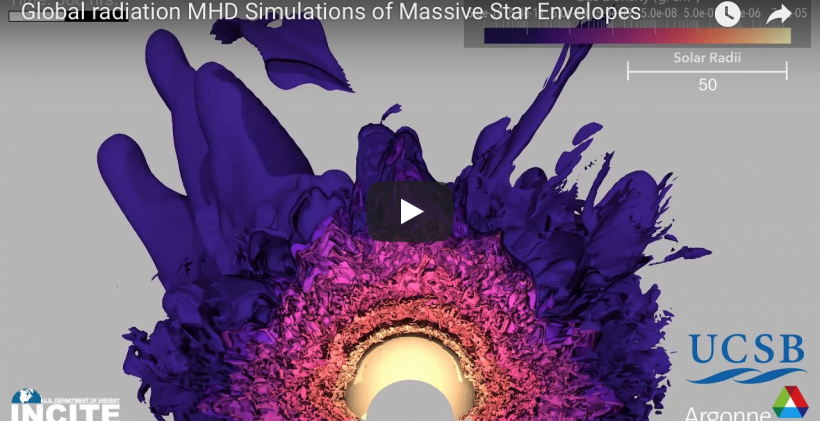Science:
Yan-Fei Jiang, University of California at Santa Barbara
Matteo Cantiello, Flatiron Institute
Lars Bildsten, University of California at Santa Barbara
Eliot Quataert, University of California at Santa Barbara
Omer Blaes, University of California at Santa Barbara
James Stone, Princeton University
Visualization:
Joseph A. Insley, Argonne Leadership Computing Facility, Argonne National Laboratory
Massive stars play an important role in many astrophysical environments such as star formation and the structure of the interstellar medium in galaxies. However, the structures and mass loss of massive stars, which are crucial to understand the evolution and fate of massive stars are still mysteries. Global radiation hydrodynamic simulations of an 80 solar mass star envelope were performed on Mira to find the answers. Convection around the iron opacity peak region causes the turbulent structures seen here. Density is highest in the yellow region near the core of the star. Low density wind is launched near the surface.
This research used resources of the Argonne Leadership Computing Facility, which is a DOE Office of Science User Facility supported under Contract DE-AC02-06CH11357.
